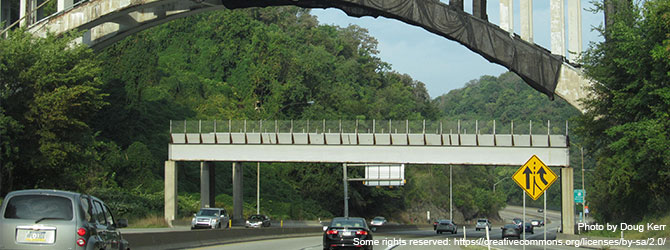As Michael Walsh said in his recent thought leadership video, bridges that were designed in the 1950s to handle loads of more than one hundred thousand vehicles per day are now only able to handle eighty thousand. The state of our bridges is so decrepit that not only have equipment distributors developed product lines dedicated to bridge debris netting solutions, but an "under bridge" was built in 2004 for the sole purpose of catching bridge debris—both of which highlight a general complacency with the situation.

Confidence in Our Civil Engineers
I believe a sense of silent confidence breeds the best solutions. Through this blog, I want to give you that sense of confidence by sharing an example of the kind of hyper-specific learning our civil engineers are exposed to. As one of the lucky professionals teaching college students about the distinct design considerations they will encounter on the project site, I can assure you that there's a lot more going into the next generation of bridge design than you may realize.
Nitty-Gritty Steel Design
Steel is not meant to last forever. It can bend back and forth an untold number of times, but eventually it's going to wear out. As a part-time faculty member at Merrimack College in North Andover, Massachusetts, my goal as professor of course Civil Engineering 5012: Steel Analysis and Design is to teach the next crop of civil engineers how to design stronger and more resilient steel-based infrastructure components.
The class I teach includes 26 individual lessons, starting with general codes and materials before diving into everything from tension members to composite design. Beyond the more practical lessons taught in this course, we donate significant classroom time to the study of two design methodologies: allowable stress design (ASD) versus load resistant factor design (LRFD). While the former is the historically accepted design methodology of comparing actual and allowable stresses, the latter compares required strength to actual strengths. Both methodologies are important and used on the job site depending on the situation, but the introduction of LRFD to the profession has helped produce structures with more consistent safety factors.
I won't get into the details (feel free to audit my course if you want to learn more), but suffice it to say that these are some of the most important lessons they'll use to solve our ailing infrastructure problems.
Confidence Breeds Successful Solutions
The pervading sense of optimism our nation had in the 1950s led to an infrastructure that's been replicated around the world, and it's time to bring that optimism back. The purpose of this blog is not to teach you 15 weeks' worth of steel design lessons. Rather, it's to give you the confidence to talk about this problem openly and with a sense of optimism.
If we fear a problem too much, it will become taboo, and it's far better to address a problem head on than stick our heads in the sand.
WATCH "MICHAEL WALSH ON A MORE RESILIENT NATIONAL INFRASTRUCTURE"